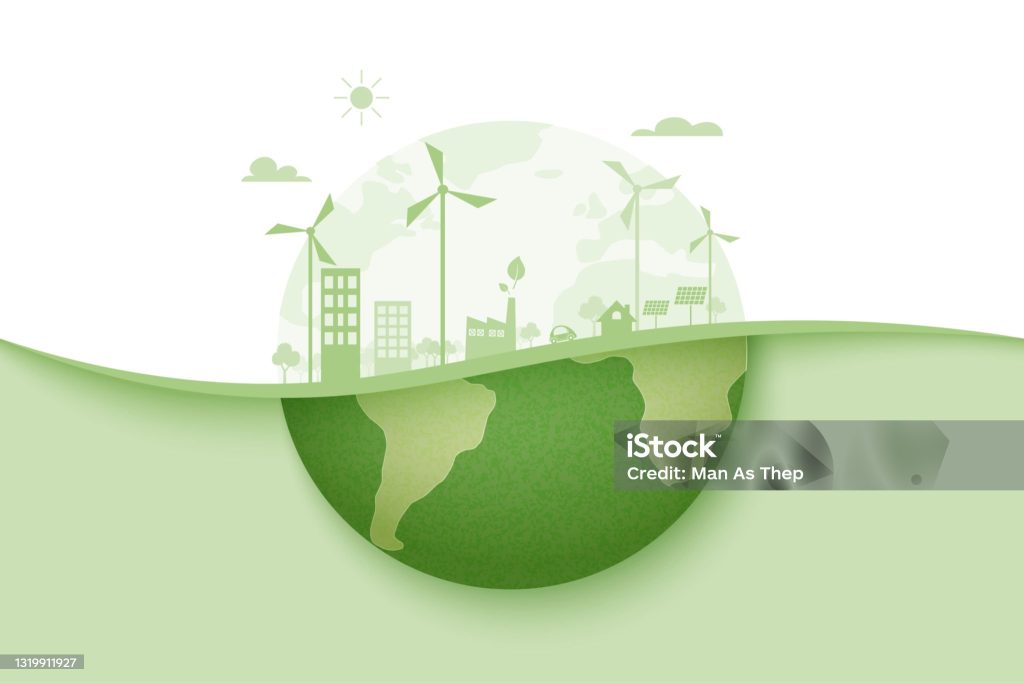Table of Contents
In an era marked by increasing environmental concerns and climate change, sustainable technology, or “green tech,” has emerged as a beacon of hope for creating a more eco-friendly future. Green technology encompasses innovations designed to reduce environmental impact, conserve resources, and promote sustainability. This article explores some of the most promising advancements in green technology and their potential impact on the environment.

The Rise of Renewable Energy
One of the most significant innovations in green technology is the advancement of renewable energy sources. Solar, wind, and hydroelectric power have long been at the forefront of efforts to reduce reliance on fossil fuels. Recent innovations are making these technologies more efficient and accessible.
Solar Power: Photovoltaic (PV) cells, which convert sunlight into electricity, have seen dramatic improvements in efficiency and cost-effectiveness. The development of advanced materials, such as perovskite solar cells, promises higher energy conversion rates and lower production costs. Additionally, innovations in solar panel design, like bifacial panels that capture light on both sides, are enhancing energy output.
Wind Power: Wind turbine technology has also evolved, with larger and more efficient turbines being deployed both onshore and offshore. Innovations like vertical-axis wind turbines and floating wind farms are expanding the potential for wind energy, especially in regions with challenging conditions or limited space.
Hydroelectric Power: Modern hydroelectric systems are becoming more environmentally friendly with the development of small-scale and micro-hydroelectric systems. These technologies reduce the impact on aquatic ecosystems while still harnessing the power of flowing water.
Energy Storage and Grid Modernization
The integration of renewable energy sources into the grid requires advancements in energy storage and grid management. Innovative solutions in these areas are crucial for balancing supply and demand and ensuring a stable energy supply.
Energy Storage: Battery technology is rapidly evolving, with advancements in lithium-ion and solid-state batteries improving storage capacity, safety, and lifespan. These innovations enable more effective storage of renewable energy, reducing the reliance on fossil-fuel-based backup power. Additionally, research into alternative storage methods, such as flow batteries and hydrogen storage, is expanding the options for energy storage.
Grid Modernization: Smart grids and advanced energy management systems are enhancing the efficiency and reliability of power distribution. These technologies use sensors, data analytics, and automation to optimize energy use, reduce waste, and respond to fluctuations in supply and demand. Smart grids also facilitate the integration of distributed energy resources, such as residential solar panels and electric vehicles, into the broader energy network.

Green Building Technologies
The construction industry is adopting green technologies to reduce the environmental impact of buildings and infrastructure. Innovations in this sector focus on energy efficiency, sustainable materials, and resource conservation.
Energy-Efficient Building Systems: Modern buildings are increasingly incorporating energy-efficient systems, such as advanced heating, ventilation, and air conditioning (HVAC) systems, LED lighting, and automated building management systems. These technologies reduce energy consumption and operational costs while enhancing occupant comfort.
Sustainable Materials: The use of sustainable building materials, such as recycled materials, low-impact concrete, and green insulation, is becoming more prevalent. Innovations in materials science are leading to the development of eco-friendly alternatives that reduce the carbon footprint of construction projects.
Green Roofs and Urban Farming: Green roofs and urban farming initiatives are gaining traction in urban areas. Green roofs, which involve covering rooftops with vegetation, provide insulation, reduce stormwater runoff, and improve air quality. Urban farming, facilitated by vertical gardens and hydroponic systems, offers local, sustainable food production within city environments.
Water Conservation and Management
Water scarcity and pollution are pressing environmental issues that green technology aims to address through innovative solutions in water conservation and management.
Water Recycling and Reuse: Technologies for recycling and reusing water are becoming more sophisticated. Advanced filtration systems, such as membrane bioreactors and reverse osmosis, enable the treatment of wastewater to a high standard, making it suitable for non-potable uses and even potable reuse.
Desalination: Innovations in desalination technology, such as energy-efficient reverse osmosis and solar desalination, are improving the feasibility of turning seawater into freshwater. These advancements are crucial for addressing water shortages in arid regions and providing clean drinking water.
Smart Water Management: Smart water management systems use sensors and data analytics to monitor and optimize water use in real time. These systems help detect leaks, manage irrigation efficiently, and ensure the sustainable use of water resources.
The Impact on the Environment
The adoption of green technologies has a significant positive impact on the environment. By reducing reliance on fossil fuels and minimizing waste, these innovations contribute to lower greenhouse gas emissions and decreased environmental degradation. Renewable energy sources reduce air and water pollution, while energy storage and grid modernization enhance the efficiency of energy use.
Sustainable building technologies and water management solutions further reduce environmental impacts by conserving resources and promoting eco-friendly practices. The cumulative effect of these technologies supports efforts to combat climate change, protect ecosystems, and promote long-term sustainability.

Challenges and Future Directions
Despite their potential, green technologies face challenges related to cost, scalability, and implementation. Continued research and development, along with supportive policies and incentives, are essential for overcoming these obstacles and accelerating the transition to a more sustainable future.
As green technology continues to advance, its role in addressing environmental challenges will become increasingly crucial. By embracing innovation and investing in sustainable solutions, we can work towards a future where technology and environmental stewardship go hand in hand, ensuring a healthier planet for generations to come.

